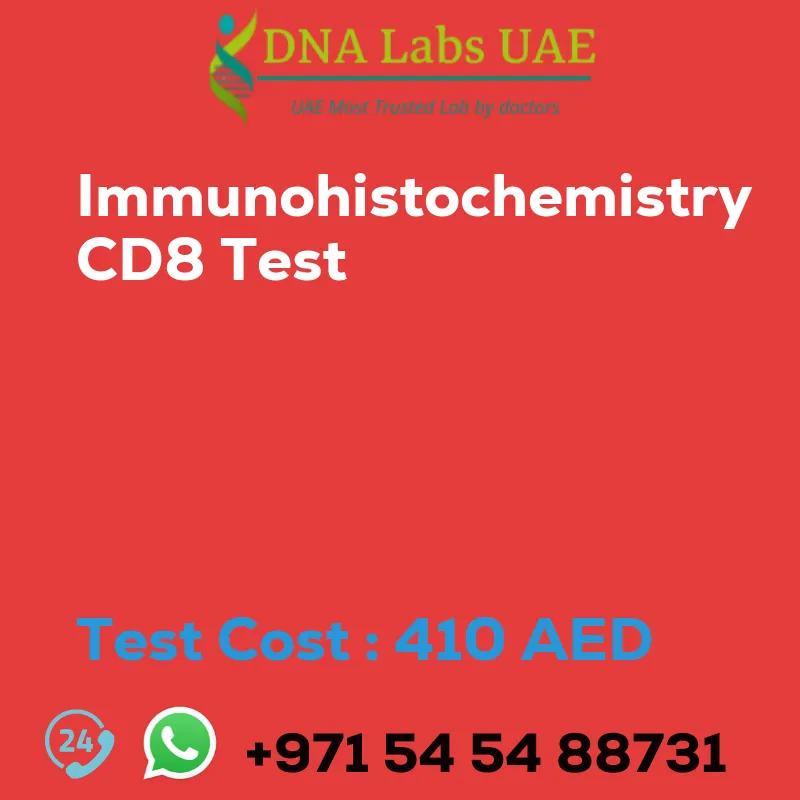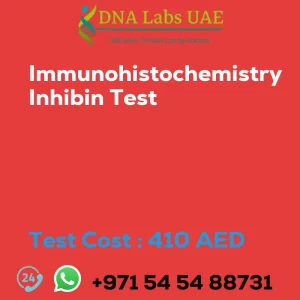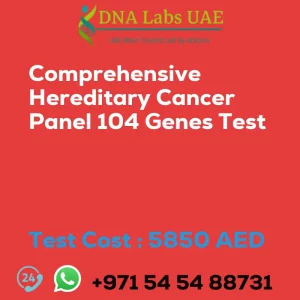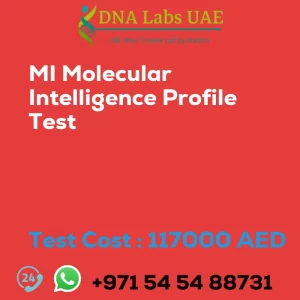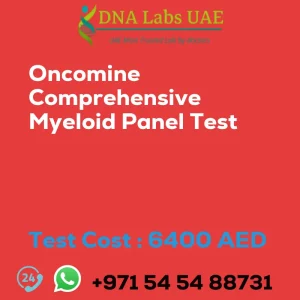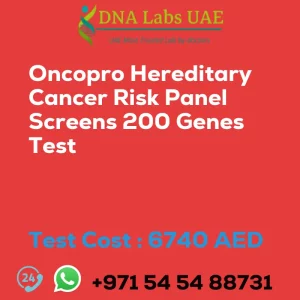IMMUNOHISTOCHEMISTRY CD8 Test
Cost: AED 410.0
Test Name: IMMUNOHISTOCHEMISTRY CD8 Test
Components: CD8 protein
Price: 410.0 AED
Sample Condition: Submit tumor tissue in 10% Formal-saline OR Formalin fixed paraffin embedded block. Ship at room temperature. Provide a copy of the Histopathology report, Site of biopsy and Clinical history.
Report Delivery: Sample Daily by 6 pm; Report Block: 5 days Tissue Biopsy: 5 days Tissue large complex: 7 days
Method: Immunohistochemistry
Test Type: Cancer
Doctor: Oncologist, Pathologist
Test Department: DNA Labs UAE
Pre Test Information: Provide a copy of the Histopathology report, Site of biopsy and Clinical history.
Test Details
CD8 is a protein found on the surface of cytotoxic T cells, which are a type of immune cell involved in killing infected or abnormal cells. Immunohistochemistry (IHC) is a technique used to visualize and detect specific proteins in tissue samples.
To perform an immunohistochemistry CD8 test, the following steps are typically involved:
- Tissue preparation: The tissue sample, usually obtained through a biopsy or surgical procedure, is fixed in formalin and embedded in paraffin wax. The sample is then cut into thin sections (around 4-6 micrometers thick) using a microtome.
- Deparaffinization and rehydration: The paraffin wax is removed from the tissue sections by immersing them in xylene or other clearing agents. The sections are then rehydrated through a series of alcohol solutions of decreasing concentration.
- Antigen retrieval: The tissue sections are subjected to antigen retrieval techniques to unmask the target protein and improve antibody binding. This can be done through heat-induced epitope retrieval (HIER) or enzymatic digestion.
- Blocking: Non-specific binding sites on the tissue sections are blocked using a blocking agent, such as bovine serum albumin (BSA) or normal serum, to prevent false positive results.
- Primary antibody incubation: The tissue sections are incubated with a primary antibody specific to CD8. The primary antibody binds to the CD8 protein if it is present in the tissue sample.
- Secondary antibody incubation: After washing off any unbound primary antibody, the tissue sections are incubated with a secondary antibody conjugated to a detection system, such as a fluorescent dye or an enzyme. The secondary antibody binds to the primary antibody, amplifying the signal and making it detectable.
- Visualization: If an enzyme-based detection system is used, a chromogenic substrate is added, resulting in the formation of a visible color at the site of CD8 protein expression. If a fluorescent dye is used, the tissue sections are directly observed under a fluorescence microscope.
- Counterstaining and mounting: To enhance the contrast and visualization of the tissue structures, the sections may be counterstained with dyes like hematoxylin. Finally, the sections are mounted on glass slides using a mounting medium and covered with a coverslip.
- Analysis: The stained tissue sections are then examined under a microscope by a pathologist or researcher to determine the presence and distribution of CD8-positive cells.
The immunohistochemistry CD8 test allows for the visualization and quantification of CD8-positive immune cells in tissue samples, providing valuable information about the immune response and potential immune-related diseases.
| Test Name | IMMUNOHISTOCHEMISTRY CD8 Test |
|---|---|
| Components | |
| Price | 410.0 AED |
| Sample Condition | Submit tumor tissue in 10% Formal-saline OR Formalin fixed paraffin embedded block. Ship at room temperature. Provide a copy of the Histopathology report, Site of biopsy and Clinical history. |
| Report Delivery | Sample Daily by 6 pm; Report Block: 5 days Tissue Biopsy: 5 days Tissue large complex : 7 days |
| Method | Immunohistochemistry |
| Test type | Cancer |
| Doctor | Oncologist, Pathologist |
| Test Department: | |
| Pre Test Information | Provide a copy of the Histopathology report, Site of biopsy and Clinical history. |
| Test Details |
CD8 is a protein found on the surface of cytotoxic T cells, which are a type of immune cell involved in killing infected or abnormal cells. Immunohistochemistry (IHC) is a technique used to visualize and detect specific proteins in tissue samples. To perform an immunohistochemistry CD8 test, the following steps are typically involved: 1. Tissue preparation: The tissue sample, usually obtained through a biopsy or surgical procedure, is fixed in formalin and embedded in paraffin wax. The sample is then cut into thin sections (around 4-6 micrometers thick) using a microtome. 2. Deparaffinization and rehydration: The paraffin wax is removed from the tissue sections by immersing them in xylene or other clearing agents. The sections are then rehydrated through a series of alcohol solutions of decreasing concentration. 3. Antigen retrieval: The tissue sections are subjected to antigen retrieval techniques to unmask the target protein and improve antibody binding. This can be done through heat-induced epitope retrieval (HIER) or enzymatic digestion. 4. Blocking: Non-specific binding sites on the tissue sections are blocked using a blocking agent, such as bovine serum albumin (BSA) or normal serum, to prevent false positive results. 5. Primary antibody incubation: The tissue sections are incubated with a primary antibody specific to CD8. The primary antibody binds to the CD8 protein if it is present in the tissue sample. 6. Secondary antibody incubation: After washing off any unbound primary antibody, the tissue sections are incubated with a secondary antibody conjugated to a detection system, such as a fluorescent dye or an enzyme. The secondary antibody binds to the primary antibody, amplifying the signal and making it detectable. 7. Visualization: If an enzyme-based detection system is used, a chromogenic substrate is added, resulting in the formation of a visible color at the site of CD8 protein expression. If a fluorescent dye is used, the tissue sections are directly observed under a fluorescence microscope. 8. Counterstaining and mounting: To enhance the contrast and visualization of the tissue structures, the sections may be counterstained with dyes like hematoxylin. Finally, the sections are mounted on glass slides using a mounting medium and covered with a coverslip. 9. Analysis: The stained tissue sections are then examined under a microscope by a pathologist or researcher to determine the presence and distribution of CD8-positive cells. The immunohistochemistry CD8 test allows for the visualization and quantification of CD8-positive immune cells in tissue samples, providing valuable information about the immune response and potential immune-related diseases. |

